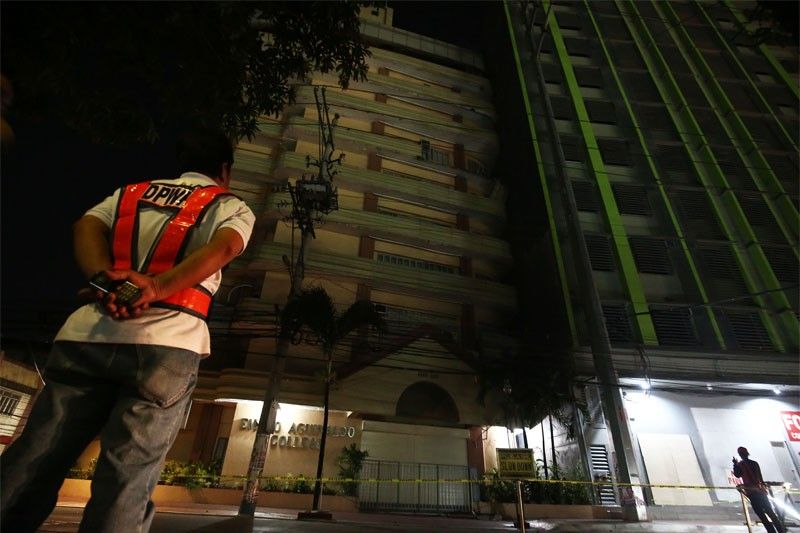Engineers: EAC building tilt could be caused by ‘liquefaction,’ ‘proximity of establishments’

MANILA, Philippines — The tilting of Emilio Aguinaldo College building in Manila following a magnitude 6.1 quake is probably caused by liquefaction and closeness of establishments, according to engineers.
'Liquefaction may cause the building tilt'
"Meron po sigurong movement sa foundation, merong liquefaction, or loosening of the soil sa ilalim kaya may failure kaya po po nagkaroon ng tilting if ever,” Roger Legaspi, city engineer of Manila, said in a radio interview with DZMM.
(There may be movement of foundation, liquefaction, or loosening of the soil under the building that is why there was a failure and there was tilting.)
In 2015, Kathleen Papiona of Philippine Institute of Volcanology and Seismology explained that “liquefaction is a phenomenon, when loosely consolidated sediments soil deposits lost their strength and appeared to flow as fluids.”
She added that the phenomenon is triggered by strong ground shaking and is commonly observed near rivers, bays, and other bodies of water since it occurs in water-saturated soils.
READ: INFOGRAPHIC: Liquefaction potential map of Metro Manila
EAC, seen leaning towards its adjacent building after the quake that jolted some parts of Luzon, lies along San Marcelino Street corner United Nations Avenue. It is around 25.6 kilometers away from Manila Bay, according to Google maps.
Legaspi said the school building, completed around 2003 to 2004, had secured building permits.
'Buildings are too close'
Meanwhile, Greg Serrano, engineer and president of Gresser Contractors and Builders Inc., commissioned by the EAC to inspect its building said his initial observation is that the tilting of the school structure was probably due to the “closeness” of the establishments in the area.
“The buildings are too close to each other that’s why it hit the building beside it,” Serrano said in Filipino in a recorded ambush interview.
The engineer explained the fiber glass terrace hit the other building but it is not a major structure.
'EAC still safe'
Serrano allayed public fears and said the building is safe, citing that there were no cracks in the floorings, beams, and columns of the building. He said the Manila engineers saw that the building was intact.
“It’s normal as before the earthquake. We don’t see any imminent danger in this building,” Serrano said, adding that this is based on his personal view.
“Initially, the assessment is still safe but we need to get the authority for the whole assessment,” he added.
The engineer said public apprehension only sparked after the photos of the EAC building circulated.
On Monday, Public Works and Highways Secretary Mark Villar asked the occupants of the EAC to vacate the building following the strong quake.
- Latest
- Trending





























